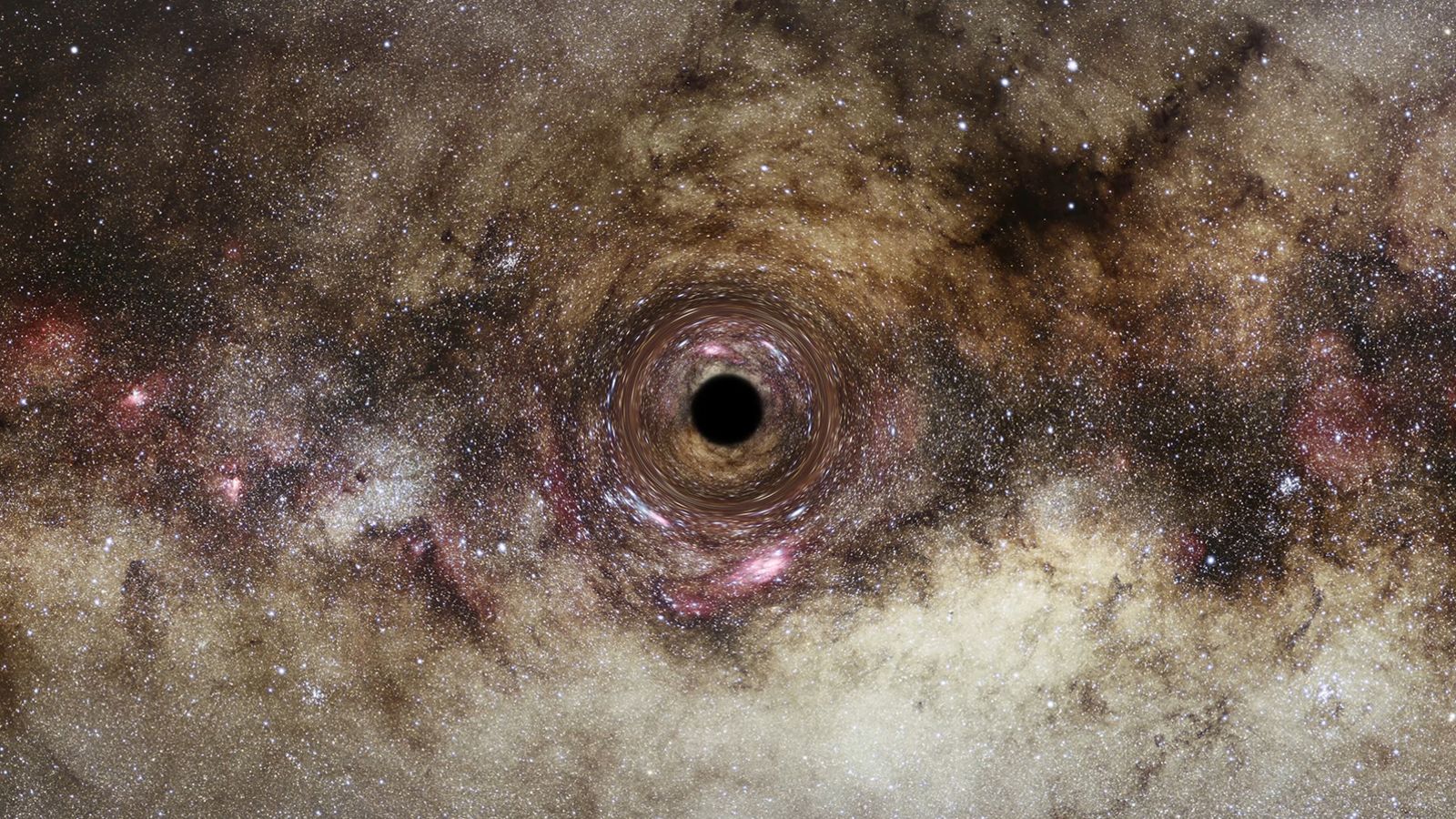(CNN) — A supermassive black hole, considered one of the largest ever discovered, has been discovered by astronomers using a new technique.
The findings, published by the Royal Astronomical Society, show that the black hole is 30 billion times more massive than the Sun, a mass rarely seen by astronomers.
The researchers described it as a “very exciting” discovery that opens up “exciting” possibilities for finding more black holes.
A team led by Durham University in England used a technique called gravitational lensing, in which a nearby galaxy is used like a giant magnifying glass to deflect light from a more distant object. This allowed us to closely examine how a black hole bends light within a galaxy hundreds of millions of light-years away from Earth.
Supercomputer simulations and images captured by the Hubble Space Telescope were used to confirm the size of the black hole.
According to a press release from the Royal Astronomical Society, this is the first black hole detected by gravitational lensing.
A black hole in the Milky Way is an artist’s creation.
“This particular black hole, 30 billion times the mass of our Sun, is one of the largest ever detected and is at the upper limit of how massive we think black holes can theoretically be, so it’s a really exciting discovery,” said James Nightingale, an observational cosmologist at Durham University’s Department of Physics. , said the study’s lead author.
“Most of the supermassive black holes we know about are active, where matter approaching the black hole heats up and emits energy in the form of light, X-rays and other radiation,” Nightingale added.
“However, gravitational lensing makes it possible to study quiescent black holes, which is currently not possible in distant galaxies. This approach will allow us to discover many more black holes beyond our local universe and reveal how these exotic objects formed further in cosmic time.”
The researchers believe the discovery is significant because it opens up the “surprising possibility of discovering black holes that are much quieter and more massive than astronomers previously thought” and “investigating how they grew so large.”
The story of this particular discovery began in 2004, when astronomer Alastair Edge, a research fellow at Durham University, noticed a large bend from gravitational lensing while reviewing images from a galaxy survey, according to a press release.
The team has now reviewed the discovery and investigated it further with the help of NASA’s Hubble Space Telescope and the DiRAC COSMA8 supercomputer.
Supermassive black holes are the largest objects in the universe and a rare find for astronomers.
Their origin is unclear, and some believe they originated from galaxies that merged a few billion years ago.
Every time a galaxy merges with another, stars are lost and the black hole gains mass, which explains the incredibly high mass of some black holes.





